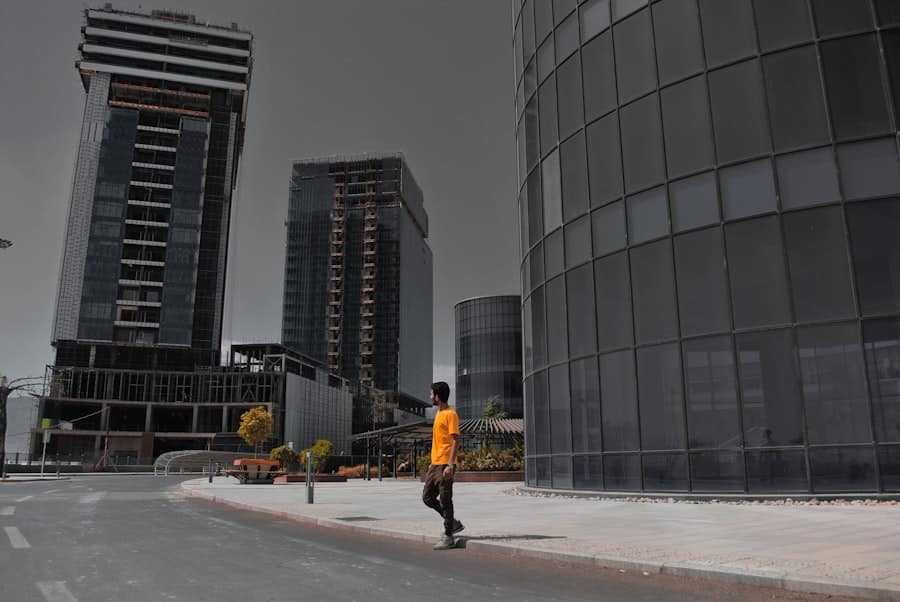Real-time simulation has emerged as a transformative tool in the realm of emergency response training, providing a dynamic and interactive environment for first responders, medical personnel, and disaster management teams. This innovative approach allows trainees to engage in lifelike scenarios that mimic the complexities and unpredictability of real-world emergencies. By integrating advanced technologies such as virtual reality (VR), augmented reality (AR), and sophisticated computer modeling, real-time simulation creates a platform where participants can practice their skills, make critical decisions, and experience the consequences of their actions in a controlled setting.
The significance of real-time simulation in emergency response training cannot be overstated. Traditional training methods often rely on static drills or theoretical knowledge, which may not adequately prepare responders for the chaotic nature of actual emergencies.
As emergency situations can evolve rapidly, the ability to adapt and respond effectively is paramount, making real-time simulation an essential component of modern training programs.
Key Takeaways
- Real-time simulation in emergency response training provides a dynamic and interactive learning environment for trainees to practice their skills in realistic scenarios.
- Using real-time simulation for emergency response training allows for cost-effective and safe training without the need for live exercises.
- Different types of real-time simulation technologies, such as virtual reality, augmented reality, and computer-based simulations, are used in emergency response training to create immersive and engaging experiences.
- Real-time simulation enhances decision-making and critical thinking skills in emergency response training by providing trainees with the opportunity to make quick and informed decisions in high-pressure situations.
- Real-time simulation plays a crucial role in creating realistic and immersive training scenarios that mimic real-life emergency situations, allowing trainees to experience and respond to various challenges.
The Benefits of Using Real-Time Simulation for Emergency Response Training
One of the primary benefits of real-time simulation is its ability to enhance experiential learning. Trainees are not merely passive recipients of information; they actively engage with the material, allowing for a more profound retention of knowledge and skills. For instance, a firefighter undergoing training can experience a simulated fire scenario where they must assess the situation, communicate with their team, and execute firefighting techniques in real time.
This hands-on approach not only reinforces theoretical concepts but also builds muscle memory, which is crucial during high-stress situations. Moreover, real-time simulation fosters collaboration and teamwork among emergency responders. In many emergency scenarios, effective communication and coordination between various agencies are vital for successful outcomes.
By participating in simulations that require inter-agency collaboration, trainees learn to navigate the complexities of multi-agency responses. For example, a joint exercise involving police, fire, and medical personnel can simulate a mass casualty incident, allowing each agency to practice their roles while understanding how their actions impact others. This collaborative training environment cultivates trust and camaraderie among different disciplines, ultimately leading to more efficient responses during actual emergencies.
The Different Types of Real-Time Simulation Technologies Used in Emergency Response Training

The landscape of real-time simulation technologies is diverse, encompassing a range of tools designed to create immersive training experiences. One prominent technology is virtual reality (VR), which transports users into a fully immersive digital environment. VR headsets allow trainees to interact with 3D simulations of emergency scenarios, such as natural disasters or terrorist attacks.
For instance, a paramedic can don a VR headset to practice triaging patients in a simulated disaster zone, experiencing the sights and sounds of chaos while honing their decision-making skills. Another significant technology is augmented reality (AR), which overlays digital information onto the real world. AR can be particularly useful for on-site training, where responders can use devices like tablets or smart glasses to receive real-time data about their environment.
For example, during a training exercise at a fire scene, AR can provide firefighters with critical information about building layouts or hazardous materials present in the area. This technology enhances situational awareness and allows responders to make informed decisions based on real-time data. Additionally, computer-based simulations that utilize sophisticated algorithms and modeling techniques are also prevalent in emergency response training.
These simulations can replicate complex scenarios involving multiple variables, such as weather conditions or population density. For instance, an emergency management team might use a computer simulation to model the impact of a hurricane on a coastal city, allowing them to test various response strategies and evaluate their effectiveness before an actual event occurs.
How Real-Time Simulation Enhances Decision-Making and Critical Thinking Skills in Emergency Response Training
Real-time simulation plays a crucial role in enhancing decision-making and critical thinking skills among emergency responders. In high-pressure situations, the ability to make quick and informed decisions can mean the difference between life and death. Through realistic simulations, trainees are placed in scenarios that require them to assess information rapidly, prioritize tasks, and execute plans under stress.
This experiential learning process helps develop cognitive skills that are essential for effective emergency response. For example, during a simulated active shooter scenario, law enforcement officers must quickly evaluate the situation, determine the best course of action, and communicate effectively with their team members. The immediacy of real-time simulation forces trainees to think critically about their decisions and consider the potential consequences of their actions.
This type of training not only prepares them for similar situations in real life but also instills confidence in their ability to handle crises. Furthermore, real-time simulation encourages reflective practice among trainees. After completing a simulation exercise, participants often engage in debriefing sessions where they analyze their performance and discuss what went well or what could be improved.
This reflective process fosters a culture of continuous learning and improvement within emergency response teams. By critically evaluating their decisions and actions during simulations, responders can identify areas for growth and develop strategies to enhance their performance in future emergencies.
The Role of Real-Time Simulation in Creating Realistic and Immersive Training Scenarios
The effectiveness of real-time simulation lies in its ability to create realistic and immersive training scenarios that closely resemble actual emergencies. By incorporating elements such as realistic sound effects, visual cues, and even physical sensations through haptic feedback devices, simulations can evoke genuine emotional responses from trainees. This level of immersion is essential for preparing responders for the psychological challenges they may face during real-life incidents.
For instance, consider a simulated earthquake scenario where emergency responders must navigate through debris-laden streets while managing injured civilians. The use of realistic sound effects—such as sirens blaring or people crying for help—can heighten the sense of urgency and stress experienced by trainees. This immersive experience not only enhances engagement but also helps responders develop resilience and coping strategies for managing stress during actual emergencies.
Moreover, the adaptability of real-time simulation allows trainers to customize scenarios based on specific learning objectives or regional challenges. For example, an emergency response team in a coastal area might focus on tsunami preparedness through tailored simulations that reflect local geography and demographics. By creating contextually relevant scenarios, trainers can ensure that participants are better equipped to respond effectively to emergencies unique to their communities.
The Importance of Incorporating Real-Time Simulation in Multi-Agency and Multi-Discipline Emergency Response Training

In today’s complex emergency landscape, incidents often require coordinated responses from multiple agencies and disciplines. Real-time simulation serves as an invaluable tool for fostering collaboration among these diverse groups. By engaging in joint training exercises that incorporate representatives from various agencies—such as fire departments, law enforcement, emergency medical services (EMS), and public health organizations—responders can practice working together in a cohesive manner.
For example, during a simulated mass casualty incident involving a train derailment, multiple agencies must coordinate their efforts to triage victims, secure the scene, and provide medical care. Real-time simulation allows these agencies to practice their roles while understanding how their actions impact one another. This collaborative training environment not only improves communication but also builds trust among responders from different backgrounds.
Furthermore, incorporating real-time simulation into multi-agency training helps identify potential challenges that may arise during actual emergencies. By simulating complex scenarios that require inter-agency collaboration, trainers can pinpoint areas where communication breakdowns or logistical issues may occur. Addressing these challenges during training ensures that responders are better prepared to navigate the complexities of real-world incidents when they arise.
Challenges and Limitations of Real-Time Simulation in Emergency Response Training
Despite its numerous advantages, real-time simulation in emergency response training is not without challenges and limitations. One significant hurdle is the cost associated with developing and implementing advanced simulation technologies. High-quality VR systems or sophisticated computer models can require substantial financial investment, which may be prohibitive for some organizations or agencies with limited budgets.
Trainees may need time to become familiar with the equipment and software used in simulations before they can fully benefit from the training experience. This learning curve can be particularly challenging for older personnel who may not be as comfortable with technology as younger generations.
Moreover, while real-time simulations strive for realism, they may not always capture every nuance of an actual emergency situation. Certain variables—such as human emotions or unpredictable behaviors—can be difficult to replicate accurately within a simulated environment. As a result, there is a risk that trainees may develop an over-reliance on simulation experiences without fully understanding the complexities involved in real-life emergencies.
The Future of Real-Time Simulation in Emergency Response Training and Potential Developments
Looking ahead, the future of real-time simulation in emergency response training appears promising as technology continues to evolve at an unprecedented pace. One potential development is the integration of artificial intelligence (AI) into simulation systems. AI could enable simulations to adapt dynamically based on trainee decisions or environmental changes, creating even more realistic scenarios that challenge responders’ critical thinking skills.
Additionally, advancements in wearable technology may enhance the immersive experience further by providing physiological feedback during simulations. For instance, heart rate monitors could track trainees’ stress levels during high-pressure scenarios, allowing trainers to tailor debriefing sessions based on individual responses to stressors. Furthermore, as virtual reality becomes more accessible and affordable, we may see an increase in its adoption across various sectors beyond traditional emergency response training.
Industries such as healthcare or industrial safety could benefit from similar immersive training experiences that prepare personnel for high-stakes situations. In conclusion, real-time simulation represents a significant advancement in emergency response training methodologies. By providing realistic scenarios that enhance decision-making skills and foster collaboration among diverse agencies, this approach prepares responders for the complexities of modern emergencies while addressing some of the limitations inherent in traditional training methods.
In the realm of emergency response training, real-time simulation plays a crucial role in preparing responders for high-pressure situations. By creating realistic scenarios, trainees can practice decision-making and problem-solving skills in a controlled environment, which enhances their readiness for actual emergencies. A related article that explores the importance of technology in training and development is “The Ultimate Guide to the 6 Best DJ Software for Beginners in 2023.” While this article primarily focuses on DJ software, it highlights the broader theme of how technology can be leveraged to enhance learning and skill acquisition. You can read more about it here.
FAQs
What is real-time simulation in emergency response training?
Real-time simulation in emergency response training involves the use of computer-based simulations to create realistic scenarios that allow emergency responders to practice and improve their skills in a controlled environment.
How does real-time simulation benefit emergency response training?
Real-time simulation allows emergency responders to practice their skills in a safe and controlled environment, without the risk of real-life consequences. It also provides an opportunity to train for a wide range of emergency scenarios, including those that are rare or difficult to replicate in real life.
What are the key features of real-time simulation in emergency response training?
Key features of real-time simulation in emergency response training include realistic scenarios, interactive decision-making, real-time feedback, and the ability to repeat and modify scenarios for continuous improvement.
What are some examples of real-time simulation technologies used in emergency response training?
Examples of real-time simulation technologies used in emergency response training include virtual reality (VR) simulations, computer-based simulations, and simulators for specific emergency response equipment such as firefighting or medical equipment.
How does real-time simulation improve the effectiveness of emergency response training?
Real-time simulation allows emergency responders to practice their skills in a realistic and immersive environment, which can lead to improved decision-making, faster response times, and better coordination among team members during real-life emergencies.

